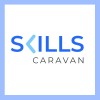Bridge Skills Gaps In Your Organization
Most companies and organizations are aware that there is a skills gap. This is also an area of concern for employee development. And in this scenario, the managers face issues trying to improve employee performance. The problem is to identify and close those skill gaps. Time and energy must be spent in surveying the teams and discovering the missing skills. This is both distracting and a hindrance.
The alternative is a top-down scenario, where just a few managers nominate the core skills to develop. But this is neither collaborative nor comprehensive. It’s just too subjective. And yet, skill gaps need to be identified. Today, the best way to upskill and reskill your teams is through skills-based learning. This article will help you with how to find and close skill gaps them within your organization, which will in turn help you to reach your business goals.
Why Do Skill Gaps Need To Be Identified?
Identifying a weakness is the first step towards overcoming that weakness. You cannot help your teams improve if you do not know what needs to be improved. This then informs your overall Learning and Development (L&D) strategy and gives you a base to grow from. The pity is most L&D programs do not start here. Most L&D, instead, uses a topic-based approach, thinking that if enough content is generated, then some of it must be relevant.
If you know the skills gaps, this helps the company identify its current and future issues including talent and knowledge shortages. It provides employees with a clear career progression path, including what steps to take next. Provides fair quality and specific reference points in performance reviews about the evaluative nature of feedback given to all members of the team. This keeps the corporation focused on continuous improvement. The more effective the culture, the more versatile and more future-proofed the organization.
There is value in identifying the skill gaps but then deciding not to invest in upskilling, at least for now. Perhaps they are not urgent or the impact of some of the employee skill gaps is not quite as critical as others identified. It is okay not to address and close all the skill gaps at one time.
How To Identify Them
The first requirement for improving workforce performance becomes that of determining the skill gaps in a workplace, which is directly to the interest of every leader. The following are some of the major steps involved in skill gap analysis:
1. Skill Gap Analysis
An analysis of the gap will give insight into the competency available at employee levels and knowledge gaps. Cataloging existing skills against needed skills for a role enables HR professionals to have a basis of prioritizing Learning and Development initiatives. Particular skill gaps enable organizations to strategize on hiring talent or reskilling existing employees to meet future demands.
2. Review Performance
Workforce skill development discussions also encompass employee performance reviews. Employing findings from skill benchmarking, managers can focus on areas of weakness and work in coordination with the employees to develop a plan for improvement. This would help workers align with what their job roles demand in terms of skills, taking actionable steps toward progress.
3. Elicit Employee Feedback
Engagement of employees in the discussion regarding skill development is extremely essential. A manager might silence the aspirations of workers by labeling them irrelevant. That can discourage an employee from learning a new skill. Real dialogue about training priorities between a manager and an employee will develop an ethos of support, increasing engagement and commitment even more.
4. Use Skill Benchmarking To Set Targets
With skill benchmarking, firms will be able to compare the competencies of employees to industry benchmarks. Through this, it will be possible for HR and L&D teams to determine whether employees are competent enough for specific roles and what needs to be upgraded for them. Better skills intelligence can modify training strategies to improve the workforce’s capabilities.
5. Experiential Learning Must Be Given The First Priority
Once the skill gaps have been determined, organizations can focus on experiential learning experiences. Although importance lies only in traditional trainings, yet, to learn effectively, there should be contextual application of the learned knowledge. By providing experiences through projects, mentorships, and other hands-on activities, companies help employees cope with knowledge gaps while propelling their careers.
By using these strategies, the capability to find and close the skill gaps successfully exists, therefore contributing towards the more capable and competitive workforce.
How To Close Skill Gaps
Nearly 70% of organizations that have implemented reskilling programs report equal or greater Return On Investment (ROI) based on business impact. Consider the following seven strategies for a successful skill-development program in order to reskill your workforce.
1. Provide Mentorship
The biggest influencer of skill acquisition is mentorship. Training and mentoring employees improve their retention of new skills. A comprehensive matching process and scheduled one-on-one meetings will ensure that it works to the advantage of both parties.
2. Utilize A Learning Management Platform
Implementing a learning management platform makes the training process easier. With 88% of employees preferring to learn using new technology, it is possible to create effective customized programs via a Learning Management System (LMS). This can be implemented across multiple devices and integrates with most tools, which makes training engaging and accessible.
3. Develop Soft Skills
Soft skills are being emphasized more and more by the workplace and valued over all other hard skills by HR professionals; 93% are of this opinion. This essentially boils down to the building of interpersonal skills, from communication to teamwork, for uncomplicated collaboration. Working on social and emotional abilities such as empathy and adaptability can work wonders for staff performance.
4. Design Tailor-Made Learning Road Maps
The keys to really effective reskilling lies in personalized learning paths. Structured learning journeys improve employees’ knowledge retention and their utilization of new skills. An organization can facilitate collaborative learning, making sure training is relevant to specific roles, by grouping employees with similar experiences.
5. Mixing Learning Formats
Integration of many different learning formats enhances skill development. Although eLearning has gained popularity, it has been proven that combining face-to-face workshops and peer learning through an omnichannel approach positively affects outcomes. The variety of styles in the learning experience keeps the employees interested and caters to various learning styles.
6. Track Training Progress And ROI
Monitoring how effective training programs are is crucial, as is updating the programs continuously. The organization can obtain an accurate perspective on the success of skill development programs through evaluation reports and completion rates. High-level analysis will allow the system to identify trends and modify programs to serve employee needs better. These will improve the workforce’s skill level greatly, in handling both current challenges but also future ones as the business environment changes.
Conclusion
This is also a time when companies are focusing increasingly on preparing their people for the future. Hence knowing what skills and competencies your workforce currently possesses, and what is lacking, is very much on the agenda. Failure to fill these gaps can mean missing opportunities to innovate and losing a competitive edge. A good skill gap analysis will, therefore, be a key instrument that will help you understand what your employees can accomplish, thus building for you an accomplished workforce.
Editor’s Note: Check out our directory to find, choose, and compare eLearning Industry’s Top LMS Software.

Skills Caravan
Skills Caravan multi-product Learning Experience Platform, Content Library, Engagement platform, Credentialing and Impact reporting we automate and integrate the Learning and Development process.

